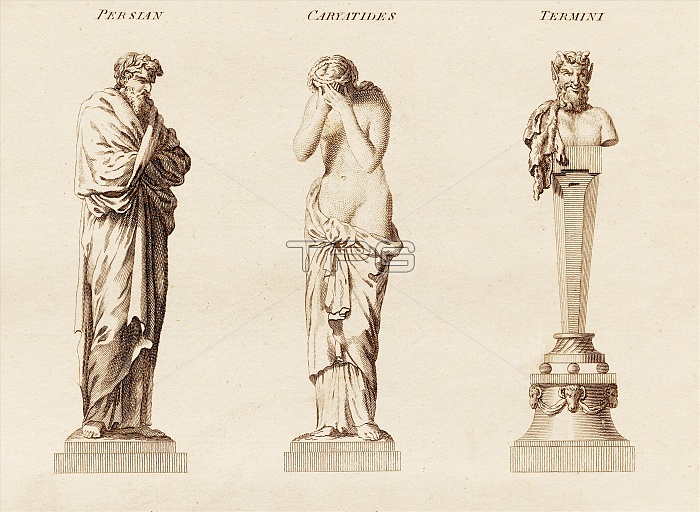
Plate from 18th century encyclopedia showing an illustration of a Herma, commonly in English a herm, is a sculpture with a head, and perhaps a torso, above a plain, usually squared lower section, on which male genitals may also be carved at the appropriate height. The form originated in Ancient Greece, and was adopted by the Romans, and revived at the Renaissance in the form of term (termini) figures and Atlantes. In the earliest times Greek divinities were worshipped in the form of a heap of stones or a shapeless column of stone or wood. In many parts of Greece there were piles of stones by the sides of roads, especially at their crossings, and on the boundaries of lands. The religious respect paid to such heaps of stones, especially at the meeting of roads, is shown by the custom of each passer-by throwing a stone on to the heap or anointing it with oil.
| px | px | dpi | = | cm | x | cm | = | MB |
Details
Creative#:
TOP11720285
Source:
達志影像
Authorization Type:
RM
Release Information:
須由TPG 完整授權
Model Release:
NO
Property Release:
NO
Right to Privacy:
No
Same folder images:

 Loading
Loading